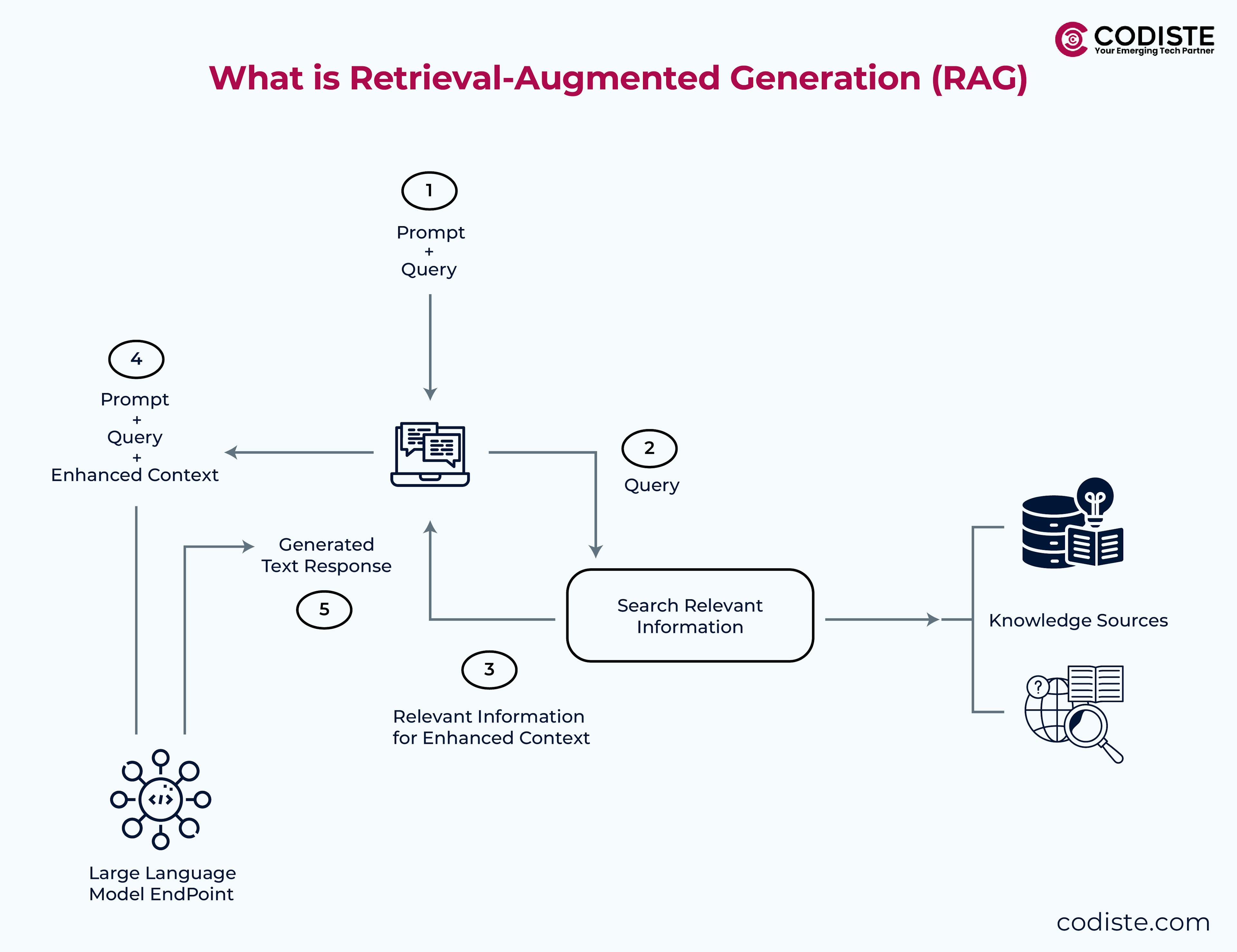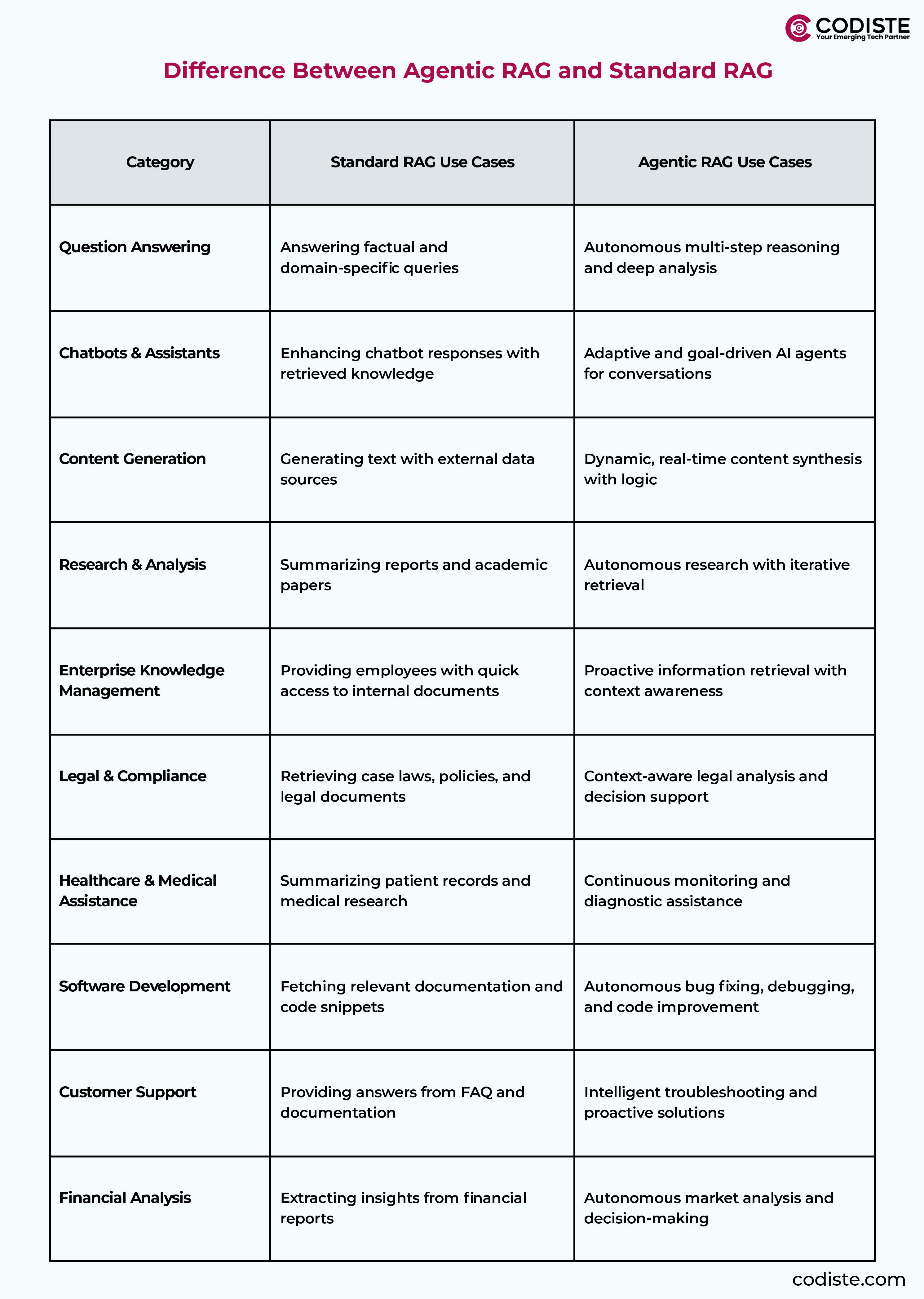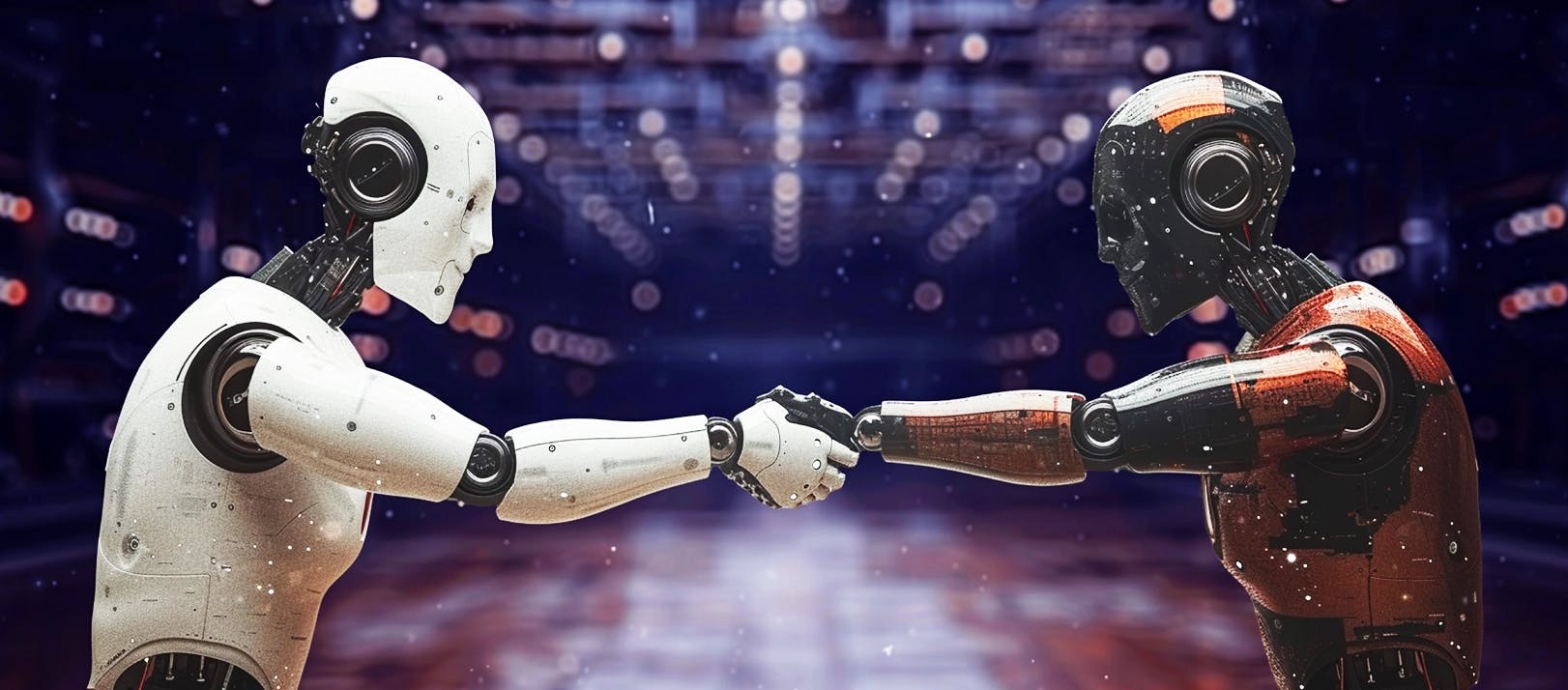
The Future of AI Automation: Agentic RAG vs. Standard RAG
The advancement of AI automation for enterprises is happening at a rapid speed. New technologies are constantly changing the way businesses and people interact with artificial intelligence. One of the biggest leaps in this area is Retrieval-Augmented Generation (RAG), a technique that boosts AI-generated responses with the help of specific data collected from external sources.
However, as next-gen AI-powered automation becomes more sophisticated, a new concept called Agentic RAG has developed. The new-generation AI-driven automation system, which has been created with a view to improving AI decision-making, should provide an enterprise with advanced and automated AI workflows. In this article, we will discuss details on Agentic RAG and Standard RAG along with their implementations, key distinctions, and what the future has in store for AI decision-making with RAG models.
What is Standard RAG?
Standard RAG, or traditional Retrieval-Augmented Generation, is the AI model blending the information retrieval and text generation areas. It operates by getting the appropriate information from a textual database and then using it to produce responses that are more authentic and make sense in the context. This method of AI improves AI automation for enterprises by guaranteeing that predictive content is not just mere guesswork but rather highly informed by the actual facts.

A traditional RAG model starts with the most direct approach. Primarily, it scans the indexed knowledge base to pull out documents and other relevant data. After that, it develops the firmware to generate message responses based on this newly acquired knowledge. These applications are the most commonly used in next-gen AI-powered automation processes like customer support chatbots, content generation tools, and search engines.
Standard RAG Implementation
Implementing a standard RAG system requires combining two main pillars, a retriever, and a generator. The retriever analyzes a dataset, a knowledge base, or indexed documents in order to find the most important information. The generator, in turn, then uses this obtained information to produce human-like answers.
Many organizations implement standard RAG to improve their AI operations. The customer service bots, for instance, use standard RAG to increase accuracy. The real-time data is fetched in order to provide the users with better and more precise responses. Furthermore, AI-driven content creation platforms use this approach so that they can create more informative and fact-based articles. The utilization of your standard RAG, however, works only to a certain extent, like one of predefined knowledge sources and another assisted decision-making.
What is Agentic RAG?
Agentic RAG brings AI automation to the next level by incorporating autonomy in both the retrieval and response process. Normally, RAG is powered by utilizing predefined retrieval and generation workflows. In contrast, Agentic RAG for business is the technology that authorizes AI agents on their own to decide what data to collect, what to do with it, and when to fix the generated responses.

This method is well-suited to the next-generation AI-powered automation solutions to tackle Enterprise AI challenges in which AI agents are enabled to operate with a limited amount of human interference. By training RAG in an agent-like way, AI models can understand and integrate various pieces of information from the sources. They can also verify the facts and criteria for the data collected, and change their responses in real-time according to the need. This is used by large companies as they make use of AI technologies that can continually learn and optimize their outputs.
Implementation of Agentic RAG
The introduction of Agentic RAG involves embedding AI agents that can operate by themselves in an AI ecosystem. These agents are not just mere retrieval and response generators. They are capable of iterative learning, data authenticity verification from multiple sources and real-time adaptation to the changes.
For example, in an AI-driven customer service application, the Agentic RAG system will independently analyze the client's questions, find out where the most recent information is, and adapt the responses so that the user can be more involved. This is also applicable in AI-led research and data analysis where Agentic RAG for business empowers AI models to go through multiple knowledge bases. In this way, it also removes old and irrelevant info before generating any insights.
Develop a powerful Agentic RAG app to make informed decisions.
5 Key Difference Between Agentic RAG and Standard RAG
Autonomy in Decision-Making
- Agentic RAG
AI agents decide by themselves which information to search, how to process it and how to upgrade their responses. In other words, they work more independently and can revise their responses according to the occurrence of new data. - Standard RAG
A structured step-by-step approach is followed where the AI takes data from an already agreed source and then, without considering whether better data is available from another source, creates the responses.
Adaptability
- Agentic RAG
The system is constantly re-evaluating and modifying its information retrieval strategies. It is becoming more dynamic and thus, is equipped for easy handling of changes related to the evolving data. - Standard RAG
It is based on a fixed set of sources and retrieval methods; this is why it is unable to adapt in real-time to changes in data.
Iterative Learning
- Agentic RAG
The improvement of AI over time is based on learning from feedback, cross-verification of multiple sources and refining of its answers. This enables it to become more accurate and relevant. - Standard RAG
This process acquires information in only one go and then delivers a response without constantly changing it. Hence, its development and adaptability are restricted.
Context Awareness
- Agentic RAG
It analyzes a query in several ways like examining different sources, the context and the past responses. All this helps the platform to communicate complex messages better. - Standard RAG
It retrieves information based on direct keyword matches without further context analysis and may result in less relevant or incomplete answers.
Enhanced AI Workflows
- Agentic RAG
AI agents are constant learners who are capable of perfecting their processes continuously, IT will help businesses to automate tasks with a higher level of precision. This feature of the system also makes it perfect for timely decision-making. - Standard RAG
This is useful in simple AI applications as it is not able to change on its own. So, there is a minimal number of advancements in the area of high-level automation tasks it can make.
Key Use Cases of RAG and Agentic RAG
Both Standard RAG and Agentic RAG have substantial applications in various fields. Traditional RAG finds wide use in customer support chatbots, content generation, as well as advanced search engine technologies. It contributes to company efficiency by allowing automated responses that are both fast.
On the contrary, Agentic RAG works well in cases where the AI models are to be trained via decision acceptance with RAG. This specific AI operation is performed by the RAG-based system in areas like financial analysis, legal research and medical diagnosis. It is commonly used in AI systems for AI agents to adjust, correct, or elaborate on AI plan execution. It is therefore very necessary in sectors that need continuous data accuracy and flexibility.
The key use cases of Standard Retrieval-Augmented Generation (RAG) and Agentic RAG:

Future Trends in RAG and the Rise of Agentic RAG
Agentic RAG is expected to be a crucial force in the AI decision-making of the future as automation evolves. Companies are increasingly using AI-based automation that can do more than give basic answers to customer questions. Agentic RAG's ability to update information in real time and learn new things will ensure that the system remains a key component of future AI automation.
The progress in AI and machine learning could be the main reason for the future Agentic RAG systems to become increasingly sophisticated. It will get attached to an AI-focused ecosystem, thus allowing AI agents to collaborate. AI-powered automation solutions for enterprises will be dependent upon the use of these intelligent systems to increase the efficiency of their operations and also to improve decision-making processes.
Conclusion
A significant leap in AI automation is the shift from Standard RAG to Agentic RAG. Standard RAG is a beneficial approach for searching and providing data. However, Agentic RAG adds flexibility, self-sufficiency, and the capacity for learning from mistakes. This makes it a favorite choice for companies that want AI workflows that are always improving.
As the AI decision-making with RAG models gets changed, the organizations that want to step ahead in the AI revolution should explore Agentic RAG solutions. Codiste is an AI-powered Agentic RAG enterprise solutions provider offering the most up-to-date next-gen AI-powered automation strategies in enterprises. Our expertise in AI agent development, workflows, combined with the implementation of innovative Agentic RAG technologies, ensures that companies can use AI to make their operations smarter, faster, and more efficient.




